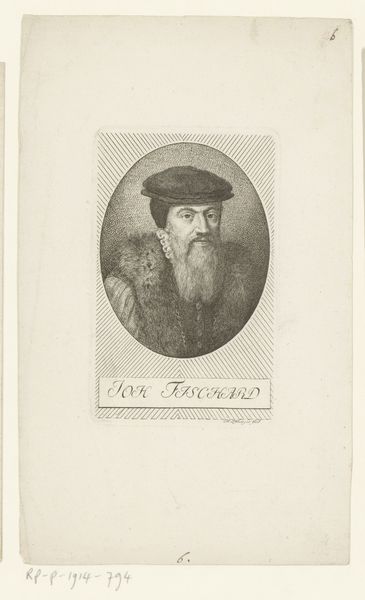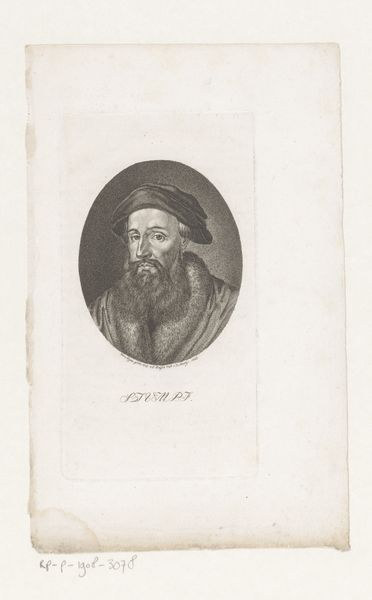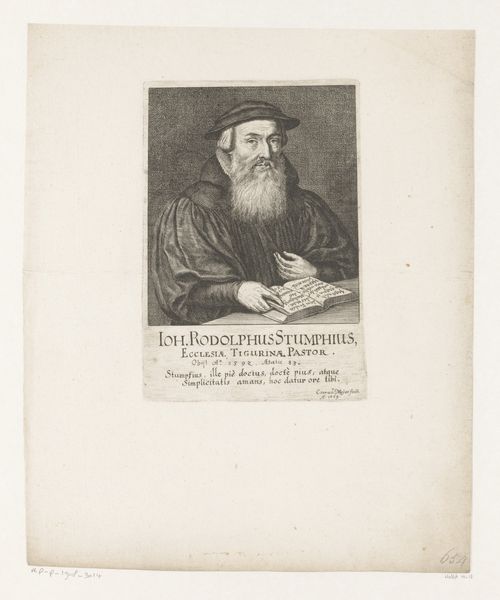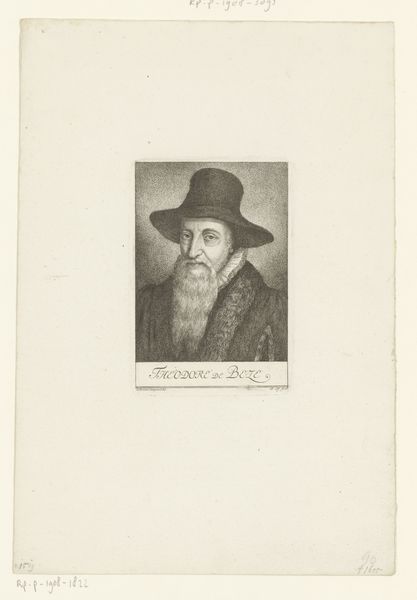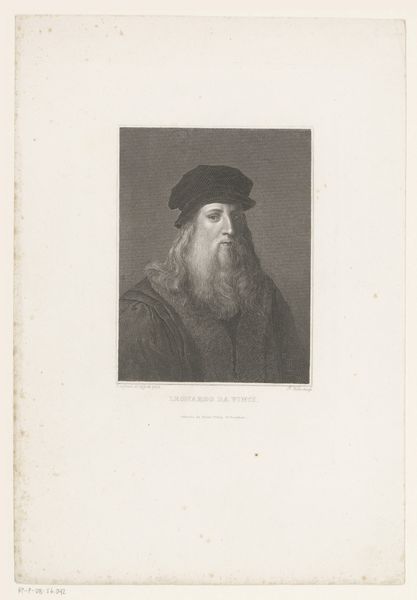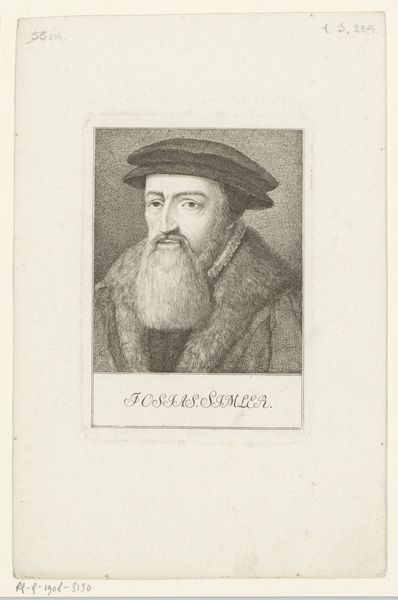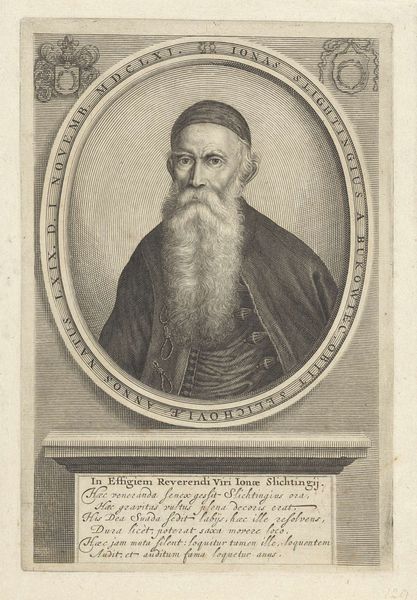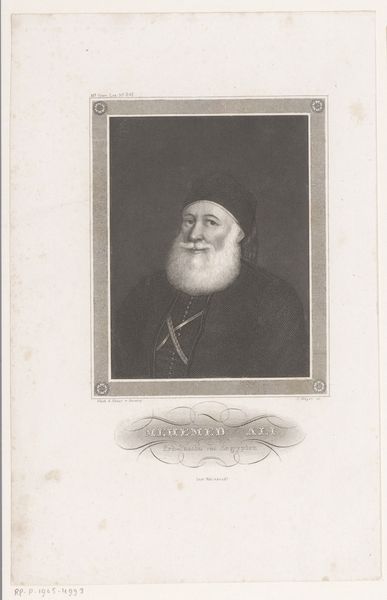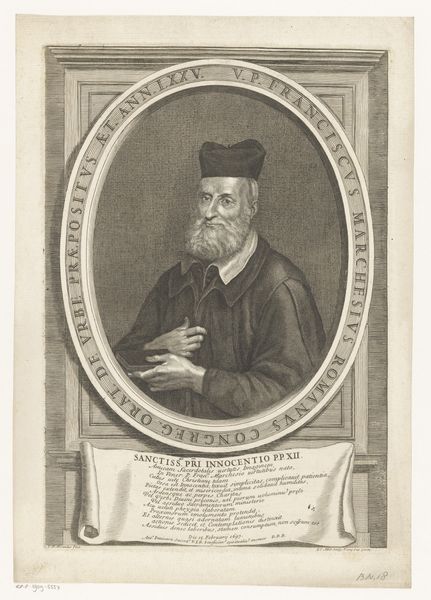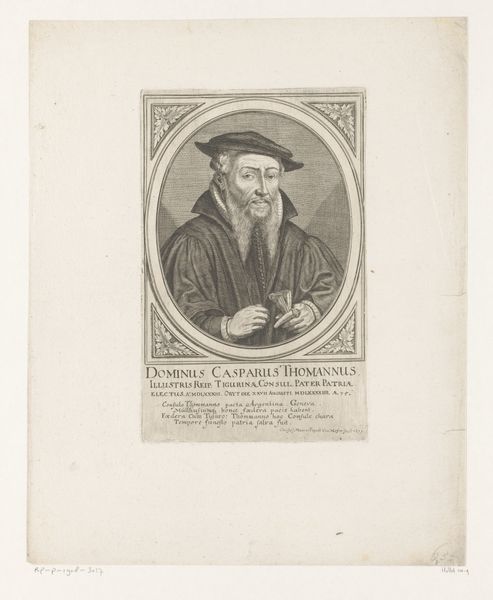
drawing, pencil, engraving
#
portrait
#
pencil drawn
#
drawing
#
neoclacissism
#
pencil sketch
#
old engraving style
#
pencil drawing
#
pencil
#
engraving
Dimensions: height 129 mm, width 84 mm
Copyright: Rijks Museum: Open Domain
Curator: This is Heinrich Pfenninger's "Portret van Guilliaume Farel," made between 1759 and 1815, rendered in pencil and engraving. A rather stern likeness, wouldn't you say? Editor: My first impression is that it's somber, almost austere. The limited tonal range created by the pencil emphasizes the sitter's rather grave expression. There is such an elegance and skill apparent, too, in how he’s managed to conjure textures, especially in Farel's beard. Curator: Indeed. This engraving would have circulated widely, playing a vital role in constructing Farel’s public image, particularly amongst followers of the Reformation. Portraits like these were powerful tools of propaganda, weren't they? Reinforcing certain ideals... Editor: Absolutely. And considering Pfenninger’s access to materials, we have to examine how that influenced the work itself. Was the pencil a readily available medium? What does that say about the accessibility of art and image-making at the time, particularly in comparison to painted portraits reserved for the wealthy elite? The lines feel incredibly controlled, a testament to the artist's practiced hand and the labor invested. Curator: A valid point. The relative affordability of engravings allowed for broader dissemination, shaping collective memory and solidifying the legacies of figures like Farel within burgeoning Protestant communities. These images provided visual anchors, reinforcing ideological commitment across geographic boundaries. Editor: I'm particularly drawn to the textures. The varying densities of the pencil work evoke the rough fabric of Farel's clothing. One can almost feel the weight of the cloth, drawing attention to the everyday life, and the tactile quality so common in artistic pieces of the Neoclassical movement. Curator: Yes, and this image demonstrates a controlled classicism; a departure from the theatricality of the Baroque period which had such dominance before. This clarity serves the didactic function, doesn’t it? Making Farel into an accessible emblem of virtue. Editor: The artist's choice of an oval frame is fascinating, as well. There is something very satisfying about how the texture interacts and provides interest without overpowering. Curator: Ultimately, this portrait testifies to the enduring power of art to shape perceptions of historical figures. Editor: Agreed. Looking closely at its materiality allows us to really connect with the period and consider access to art beyond those usually portrayed.
Comments
No comments
Be the first to comment and join the conversation on the ultimate creative platform.

